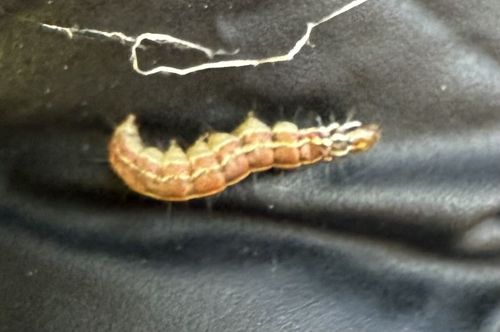Armyworm (likely Common Armyworm or Fall Armyworm)
Scientific Name: Likely Spodoptera frugiperda (Fall Armyworm) or Mythimna unipuncta (Common Armyworm/True Armyworm), though precise identification without more detail is difficult as larvae of different species can look similar.
Order & Family: Lepidoptera, Noctuidae
Size: Larvae typically range from 2.5 cm to 4 cm (1 to 1.5 inches) in length when fully grown.

Natural Habitat
Agricultural fields, pastures, grasslands, and home gardens. They prefer moist, grassy areas.
Diet & Feeding
Broadleaf weeds and grasses, including corn, wheat, barley, alfalfa, cotton, soybeans, and various forage crops. They are generalist feeders and can cause significant damage to agricultural fields.
Behavior Patterns
Armyworms are primarily nocturnal feeders but can be seen feeding during the day when populations are high or conditions are overcast. They skeletonize leaves, consume entire small plants, and can move in large numbers from one area to another once food sources are depleted. The larval stage is responsible for all feeding damage; adults are moths that lay eggs.
Risks & Benefits
Risk: Armyworms are significant agricultural pests that can cause widespread damage to crops, leading to substantial economic losses for farmers. They are known for their ability to decimate entire fields rapidly. Benefit: As a food source for various predators (birds, parasitic wasps, predatory beetles), they play a role in the food chain. However, their destructive nature generally overshadows any ecological benefits.
Identified on: 8/15/2025